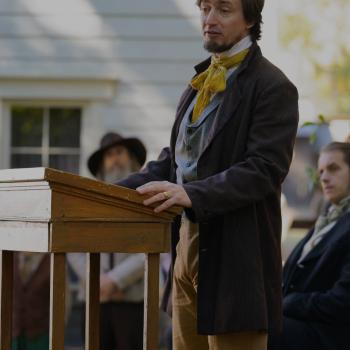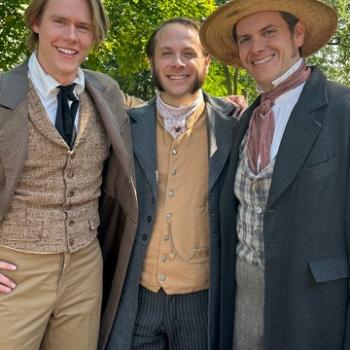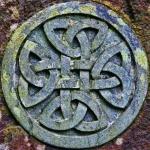
(Wikimedia Commons public domain image)
Although we really didn’t have time last night – too many urgent things to do – we attended a performance of Puccini’s La bohème. I’m sad to report that Mimi died, once again. Every time we see La bohème, I root for her, hoping that she’ll make it. But she never does.
***
We’re watching the situation in Israel with particular interest. We’re scheduled to be there, leading a tour, in about three weeks or so. By then, I think that the instability in Israel itself is likely to be over. But if, as seems likely, the Israelis launch a full-scale ground invasion of Gaza, that’s going to be extremely ugly for all concerned. Street-to-street fighting in an urban setting – especially one that is as densely packed as Gaza — is extraordinarily difficult. Already, Israeli airstrikes are very probably causing innumerable civilian casualties. And yet, I sadly think that Israel needs to do something like this. If they hold off, Hamas will simply strike again.
Yes, Gaza is a miserable and impoverished place, and I regret the situation of the Palestinians under Israeli occupation, Moreover, I’m mindful of America’s role in supporting Israel, which often permits Israel to be intransigent and to decline to budge from the status quo. But butchering members of the audience at a music festival? Kidnapping mothers and children? Executing people in their homes? Slitting the throats of young children along the roadside? This is scarcely the way to claim the moral high ground.
Years ago, a student in my Middle East Studies (Arabic) senior seminar submitted an intriguing paper in which she proposed not a two-state solution to the Arab-Israeli conflict, as is commonly suggested, but a three-state solution.
Israeli, she said, should begin immediately to negotiate full state recognition for the West Bank, which is administered by the Palestinian Authority (the lineal successor of the Palestine Liberation Organization, principally controlled by Fatah). This should be done, she wrote, quite independently of Hamas, which is based in the Gaza Strip.
Doing so, she reasoned, would put just the right kind of pressure on all three parties (Israel, the Palestinian Authority, and Hamas):
- Hamas is far and away more violent than the PA and refuses to acknowledge the legitimate existence of Israel. Moreover, even before the events of the past few days, the rocket attacks and the most brutal terrorist violence have tended to come out of the Gaza Strip.
- Israel has often said that it cannot negotiate with the Palestinians because of Palestinian violence. But that violence comes disproportionately (though not quite entirely) from Gaza, and not from the West Bank.
- Offering recognition to the PA and the West Bank would reward them for their relatively moderate stance and their apparent willingness to acknowledge Israel’s right to exist, and would encourage them to behave in a still more responsible fashion.
- Not offering recognition to Gaza would make clear to those residing in Gaza the price they pay for Hamas adventurism and intransigence (and imminent Israeli military operations are going to raise that price quite a bit higher in the next few days.)
- Israel would be forced to indicate whether it’s really serious about making peace with the Palestinians and about recognizing a Palestinian state, or whether it’s merely engaging in rhetoric to play for time.
***
We were in St. George a few days ago, and we passed by the St. George Tabernacle. Several years ago, I had the opportunity to speak there, at the pulpit where, I’m told (and find plausible), every president of the Church except Joseph Smith has spoken. That was a bit of a thrill for me.
There’s an interesting story about that pulpit that I think I’ll relate here:
Miles Romney, who was, yes, an ancestor of Mitt Romney, was a master builder who had been schooled in English architecture. He was also the supervisor of construction for the St George Tabernacle. As part of his work, he designed two elegant free-standing circular staircases that were attached to either side of the foyer-type rooms at the entrance to the Tabernacle’s main hall. He was quite proud of them. In fact, he called them his crowning achievements.
But Brigham Young was not so satisfied with the design. Specifically, he requested that the gallery be installed a few feet lower than the original plans specified. Why? Because the balcony was so high that people sitting in it could not see the pulpit. However, Brother Romney had already completed the two circular stairs and he refused to move them. In response, Brigham Young – who was himself a master carpenter and builder — devised an ingenious plan to lower the balcony by means of jacks and braces. With a workforce of two hundred men, the Tabernacle’s pillars were cut, a section was taken out, and the balcony was lowered fully five feet. As a result, Tabernacle audiences who climb the staircases today step down eight steps to the balcony, and can see the pulpit. Both men got what they wanted; neither backed down.
And there’s another St. George story to which I want to call attention here:
As the St. George Temple neared its dedication date in 1877, President Young was not satisfied with the way the steeple of the temple looked. He commented on this to his son Brigham Young, Jr.
“The tower is wooden and very unsatisfactory piece of work,” Brigham, Jr. wrote in his journal. “Father remarked he would keep the tower locked, that he was ashamed of the framing and the design. It was is some 12–18 feet too low to look well. Prest [Brigham Young, Sr.] says they will have that remided [remedied] some these days,” (Brigham Young Jr., Journal, May 10, 1876, 83).
However, the temple tower was left as it was and the temple dedicated on time. This was fortunate, because President Young died just a few months later. Had the construction on the temple continued, he probably would not have seen the completed temple.
Things continued as they were for about a year. Then, in October 1878, a severe thunderstorm struck St. George. Lightning struck the tower during the storm, completely destroying the tower but leaving the rest of the temple quite undamaged. (Brigham Young had clearly arrived in the heavenly courts!). The tower underwent repairs for a considerable period of time until the Saints finally decided to heighten it, thus giving the temple the look that Brigham Young had preferred from the start.
I hear claims from time to time that Brigham Young was a tyrant and a bully. I don’t believe that the historical record really supports that assertion. (More on that yet to come.)
I’ll particularly mention two meetings in the St. George Tabernacle:
In the 1880s, Father Lawrence Scanlon, the Catholic bishop of Utah, visited the area where miners were digging for silver north of St* George. He wanted to say mass tor the miners, and was delighted when Latter-day Saint leaders offered him the use of the Tabernacle. The St. George choir, which was directed by John Menzies Macfarlane (1833–1892), Latter-day Saint composer of the Christmas carol “Far, Far Away on Judea’s Plains,” learned the mass in Latin and performed it for the miners and the townsfolk.
More than a decade later, President Lorenzo Snow famously visited St. George in the midst of a serious economic depression and a local drought. The Church was deeply in debt and President Snow had been praying for guidance and help. While in St. George, he felt inspired to preach the law of tithing, encouraging the people to pay a full tenth of their income to the Church and promising them rain for their crops if they did. He returned to Salt Lake City preaching the same message along the way. The people responded obediently, the rains came, and, within a few years, the Church was out of debt.
Gotta run.













